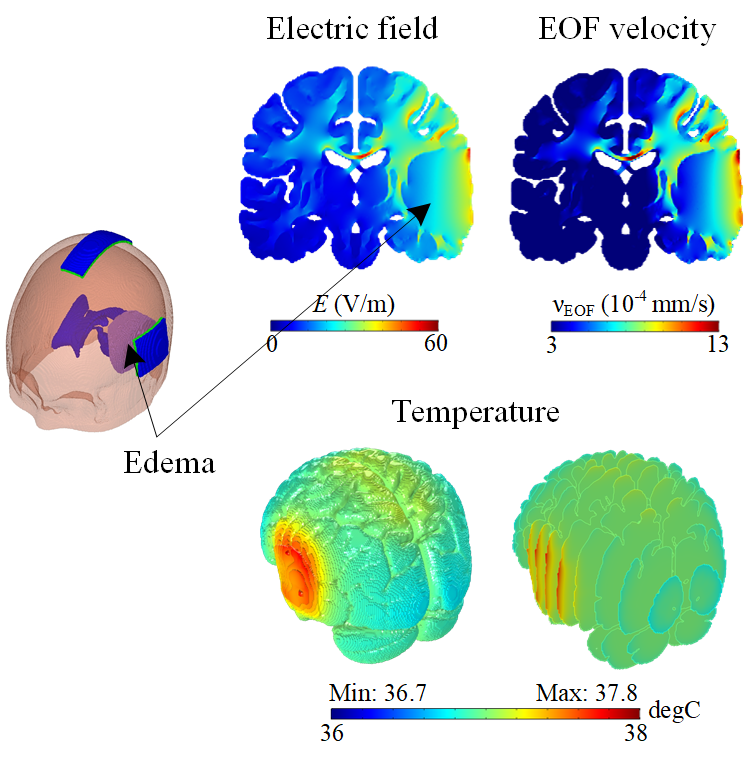Electroosmosis based novel treatment approach for cerebral edema
Cerebral edema, defined as an increased amount of water content in the brain tissue, is a major neurological complication of moderate and severe TBI and stroke. Raised intracranial pressure (ICP) is found in most moderate and severe traumatic brain injury (TBI) and may be deleterious for the patient unless treated effectively. Although improvements have been presented during the last decades, cerebral edema and raised ICP are still without any distinct and successful treatment even with combined pharmacological and surgical treatments. Patients with most severe edema after TBI or stroke are treated with decompressive craniotomy (DC) to reduce the ICP. However, DC saves lives but leaves more patients in a vegetative state and with severe disability, making DC surgery controversial and raising ethical concerns.
Electroosmotic flow (EOF), defined as fluid flow from one area to another under an electric field, has been concurrently observed in electrotherapy in research and medicine. The brain is regarded as a conductive and electrically porous material, whereas the extracellular matrix and cellular surface constitute the charged walls, and the extracellular fluid is considered a strong electrolyte. Based on this, we propose a novel edema treatment approach to drive edematous fluid out of the brain by direct current utilizing brain tissue’s electroosmotic property.
The goal of this research project is to verify the feasibility and safety of the electroosmosis based treatment for cerebral edema using FE head model, and develop a novel treatment device. The capacity of the approach for patient-specific treatment for various edema (localized, diffuse, and patient with DC) will be further investigated using patient-specific head model and animal experiments.

